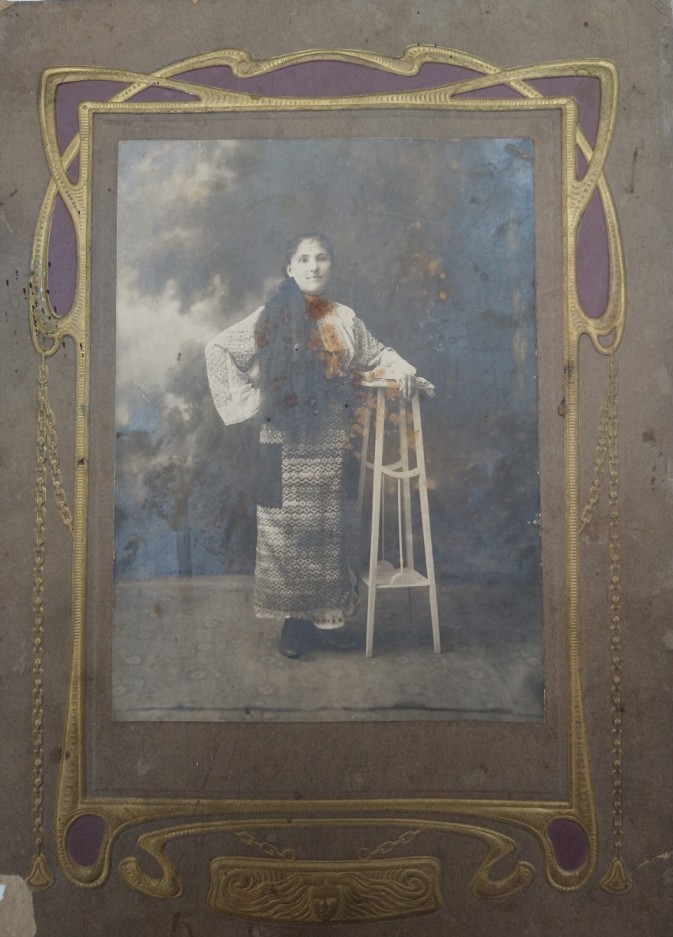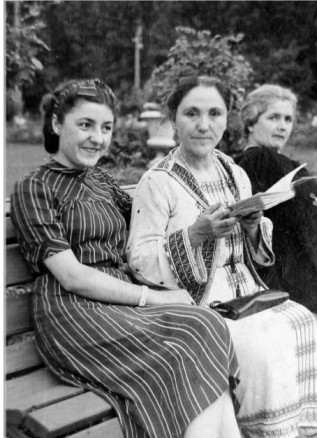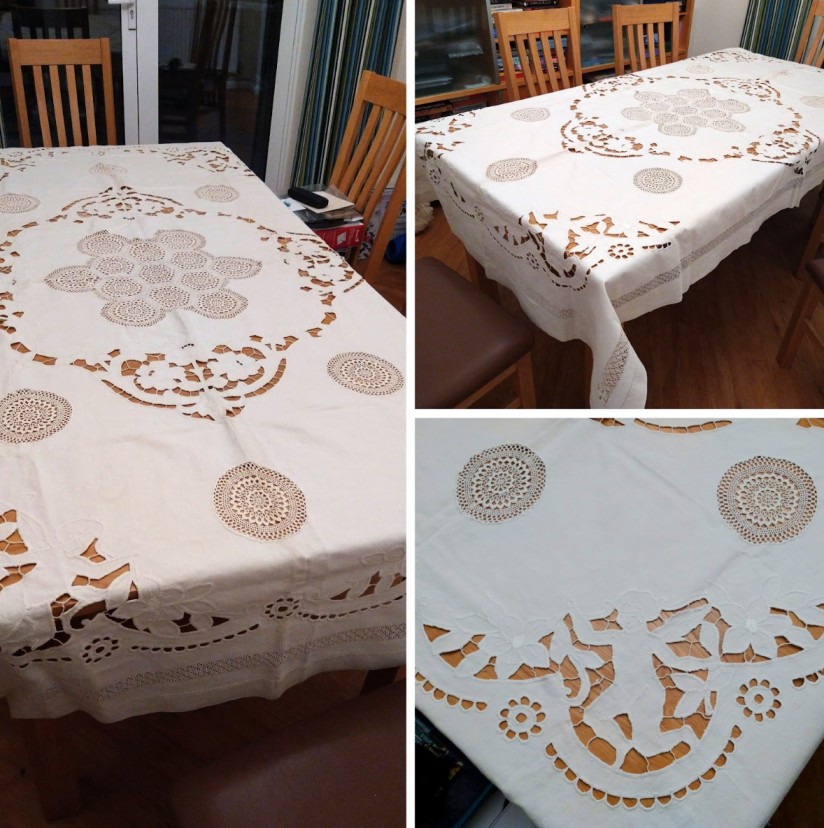The tablecloth
This is the story of my great-great aunt, tanti Flora, and the way it intersected with my mother’, grandmother’, great-grandmother’ lives(and even my own).

Flora was the younger sister of my great-grandmother, Constance (Constance’ story here) and, in modern terms, Flora was the cool one, at least until tragedy struck. I didn’t anglicise her name, she was known as Flora, though probably baptised the more Romanian, Floarea.
Keeping the social proportions, but to use an English royalty comparation, I think of Flora as princess Margaret to Constance’s princess Elizabeth, in the sense that Constance had lots of responsibilities while Flora was freer to pursue her interests. Constance, first as the elder sister of two boys and two girls, helped looking after younger siblings. Then she was a young wife, then a widow and mother. With less responsibilities and freer, Flora’s life was different. The relationships between the two sisters appear to have been warm and they were close throughout their lives for all their differences. I’d have a million questions to ask Flora if it was possible.
By all accounts of the elder relatives I have known, Flora was a very spirited, clever girl who somehow convinced her parents to let her go to Bucharest in late 1920s to train and, later, work as a midwife.
My only reference point for midwifery is the BBC series, “Call the midwife”, set (the first series) in ‘50s East End.
Is this a good approximation of 20s and 30s midwife’s life in Bucharest? Babies are babies, right?
Did Flora convince her parents or did she go against their wishes? Did she go alone? How did she train? Did the parents support her financially? Where did she work? Was she attached to a hospital but helping women give birth in their homes? How would she get to the labouring women? Was she using a bicycle like the midwives in the TV series? Was she walking? Were horses involved? Public transport? Did she have a midwife bag like they had on TV? How many babies did she deliver? Why was she not in a family photo but got a photo of her own? Was she a bit of a rebel?

In the ‘30s, Flora was renting a flat in the center of the town, next to Lazar High School. My mother loves to find patterns across the time and this is the high school I later attended. I used to roll my eyes at this, nowadays less so 🙂.
Flora was there in Bucharest when my young grandmother, Aurelia, made her own move to Bucharest as soon as she turned 18. Could her aunt have been an inspiration? We all need our role models. Aurelia lived with her aunt and they were very close, like two peas in a pod. Flora seems to have been a mix of older sister and surrogate mother for Aurelia.
The nearly three years they had in Bucharest were the happiest of their adult lives for both of them. They had their important jobs
(Flora as midwife, Aurelia as a secretary to a politician that went on to become prime minister), they went to the pictures, shopped, went back to the countryside from time to time, met visiting friends and relatives, relaxed in the central park of Bucharest, Cismigiu, with a book. When Constance came to Bucharest, she naturally stayed with her sister and daughter,
so this would be all three women of my family leaving opposite of my old highschool.

Aurelia was pregnant in the second half of 1945 and it was Flora that was her midwife on that day in December. Winter was terrible that year according to a few sources I could find. It was also the end of the war, soviet troups everywhere. Was it Aurelia’s choice to give birth at home or there was just no other option for her care? Was it normal to give birth at home for all social classes? Was there an attempt to get Aurelia to the hospital? Were the roads unusable because of snow? Did Aurelia feel more comfortable with her aunt? Too traumatic, these details were never talked about.
By then, Flora was a very experienced midwife but things went terribly wrong and Aurelia died. Flora was devastated, grieving and unconsolable. “The light went out of Flora then”, Constance later described the moment. Add supporting the devasted, blaming-herself sister to the list of Constance’s burdens.
We know now that medical professionals should not treat, operate on family members. Was it the same then and there? Was there a choice? My mother says that this is the only time when a pregnant woman died in Flora’s care. Impossible to confirm but terrible either way.
Flora continued to work as a midwife after this. There was probably little choice with all the family wealth gone after the war.
My mother, Mariana, remembers Flora as a very old woman in mourning, looking older than Constance. Mariana describes a scene when Flora humbly gave her a wrinkled, bundled tablecloth as a gift. Little Mariana had no need of a tablecloth and later told Constance that it’s ugly and she doesn’t want it but Constance said this is a special one and she should take good care of it. Mariana did take care of it, then and for decades later. Poor Flora poured her soul into embroidering this table cloth. I hope she found some solace and felt close to her beloved Aurelia.
I didn’t like the tablecloth as a child, it was too elaborate, too old-fashioned, I wanted something bright and colourful or no tablecloth at all. Since 2022, the table cloth has been in our dining room, a clear plastic cover on top to protect it, embroidered angels and all. It is about the same age as our house. It is there for all our meals, a tangible link to these two remarkable women
